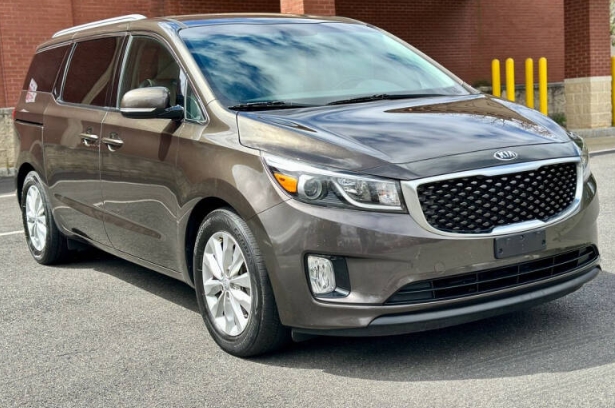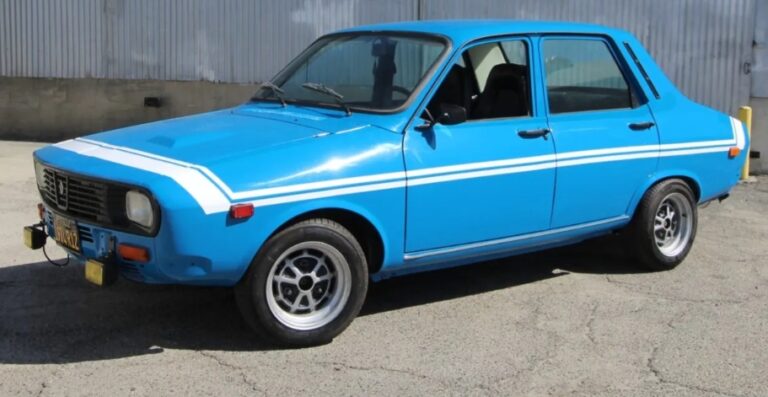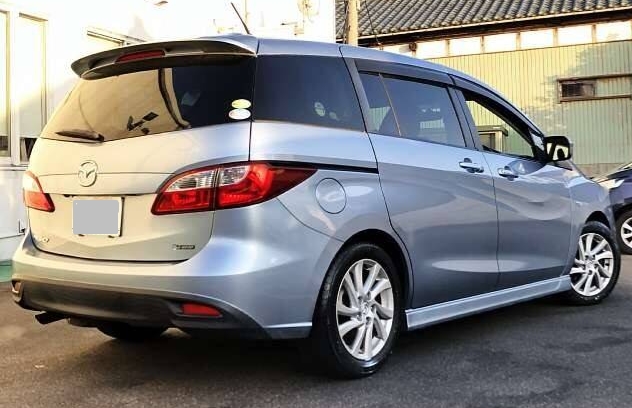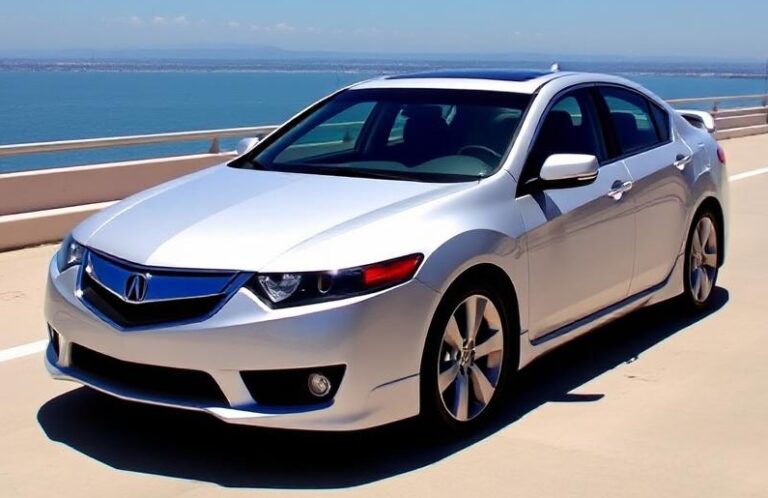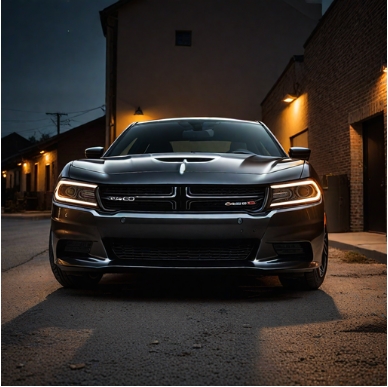The Unlikely Metamorphosis: Charting the Evolution of the Kia Sedona
In the sprawling, competitive landscape of the automotive world, few stories are as compelling as that of an underdog’s rise. The Kia Sedona, a name synonymous with family road trips and suburban utility, embodies such a narrative. Over more than two decades, it transformed from a budget-conscious necessity into a stylish, tech-laden contender that challenged the very definition of a minivan. This is the story of its evolution, a journey from humble beginnings to a triumphant swan song that set the stage for its next act.
First Generation (1998-2005; U.S. Market: 2002-2005): The Value Proposition
When Kia, then a scrappy South Korean automaker known for its budget-friendly compacts, decided to enter the North American minivan segment, the market was dominated by giants like the Dodge Grand Caravan, Honda Odyssey, and Toyota Sienna. Kia’s entry, the Sedona (known as the Carnival in global markets), made its U.S. debut for the 2002 model year with a simple, yet powerful, strategy: unparalleled value.
The first-generation Sedona was a no-frills, function-over-form machine. Its design was utilitarian and unassuming, a boxy silhouette optimized for maximum interior volume. Under the hood lay a 3.5-liter V6 engine producing a respectable 195 horsepower, paired with a four-speed automatic transmission. While it wasn’t the most refined powertrain, it was adequate for the task of hauling families and their cargo.
Where the Sedona truly made its mark was on the sticker price. It significantly undercut its rivals, often by thousands of dollars, making minivan ownership accessible to a wider range of families. This was coupled with Kia’s then-revolutionary 10-year/100,000-mile powertrain warranty, a bold statement of confidence that helped alleviate consumer concerns about the brand’s long-term reliability.
Initial safety ratings were a concern, with early crash tests revealing structural weaknesses. However, Kia responded quickly, reinforcing the vehicle’s structure for the 2004 model year, which earned it a much-improved safety rating from the Insurance Institute for Highway Safety (IIHS).
Throughout its run in the U.S., the first-generation Sedona was offered in two straightforward trim levels:
- LX: The base model came with essential features for the time, including air conditioning, power windows and locks, and seating for seven. It was the epitome of the value-oriented family hauler.
- EX: The up-level trim added a touch of comfort and convenience. It included features like alloy wheels, a roof rack, keyless entry, cruise control, and often a more premium cloth interior. A power sunroof and leather seating were available as options.
The first-generation Sedona wasn’t the best-driving, most luxurious, or most stylish minivan on the road. But it was spacious, affordable, and backed by an industry-leading warranty. It successfully carved out a niche for Kia, establishing a foothold from which the brand could grow.
.
THIS could come in handy for your auto garage (and everywhere else!):

.
Second Generation (2006-2014): The Serious Competitor
If the first generation was a quiet introduction, the second-generation Sedona, launched for the 2006 model year, was a confident statement. Built on a new platform shared with the short-lived Hyundai Entourage, this Sedona was a complete redesign that aimed to compete not just on price, but on quality, safety, and features.
The transformation was immediately apparent. The styling was more contemporary and substantial, shedding the generic look of its predecessor. The most significant engineering change was the introduction of two wheelbase options, a strategy borrowed from its American rivals. The short-wheelbase (SWB) model offered more maneuverability, while the long-wheelbase (LWB) model, which quickly became the standard in the U.S., maximized interior space and cargo capacity.
Power came from a new, more powerful and refined 3.8-liter V6 engine that produced 244 horsepower, mated to a five-speed automatic transmission. This new powertrain gave the Sedona the muscle to compete directly with the V6 offerings from Toyota and Honda.
Safety became a cornerstone of the second-generation’s appeal. It was engineered from the ground up to excel in crash tests, earning top “Good” ratings from the IIHS and a five-star rating from the National Highway Traffic Safety Administration (NHTSA), making it one of the safest minivans on the market. Standard safety features across all trims included six airbags, stability control, and traction control—a comprehensive suite for the era.
The trim lineup was expanded and offered more differentiation:
- Base/LX (LWB): This trim continued the value tradition but with a higher level of standard equipment than before. Features included fold-flat-into-the-floor third-row seating (a crucial feature known as “Stow N’ Go” in Chrysler vans) and tri-zone air conditioning.
- EX (LWB): This popular mid-range trim added desirable family features like power-sliding rear doors, alloy wheels, an upgraded stereo system, and a power-adjustable driver’s seat.
- Limited (Introduced later): At the top of the range, the Limited trim pushed the Sedona into near-luxury territory with leather upholstery, heated front seats, a sunroof, a power liftgate, and an Infinity premium sound system.
A mid-cycle refresh arrived for the 2011 model year. The 3.8-liter V6 was replaced by a more modern and efficient 3.5-liter V6 producing 271 horsepower, paired with a new six-speed automatic transmission. The refresh also brought subtle cosmetic updates, including Kia’s new signature “Tiger Nose” grille, signaling the Sedona’s integration into the brand’s new design-focused identity. By the end of its run, the second-generation Sedona had proven that Kia could build a minivan that was not only a good value but a genuinely good vehicle.
Third Generation (2015-2021): The Style Leader
The launch of the third-generation Sedona for the 2015 model year was a watershed moment. Under the direction of famed designer Peter Schreyer, Kia had transformed its entire lineup into stylish, desirable vehicles, and it was finally the Sedona’s turn. The result was a stunning metamorphosis.
Kia billed the new Sedona as a “multi-purpose vehicle” (MPV), attempting to shed the uncool stigma of the “minivan” label. Its design reflected this ambition. With a bold, CUV-inspired front end, a high beltline, and a muscular stance, it looked less like a traditional people-mover and more like a sophisticated and stylish utility vehicle.
The interior was an even greater revolution. The driver-centric cockpit wrapped around the driver, featuring soft-touch materials, elegant chrome accents, and an intuitive layout. The quality, fit, and finish were on par with, and in some cases surpassed, its Japanese rivals. The Sedona’s standout feature was the available second-row “First-Class Lounge Seating” in top trims. These reclining seats with retractable footrests offered an airline-style luxury experience never before seen in the segment.
Power was delivered by a smooth and potent 3.3-liter Gasoline Direct Injection (GDI) V6, producing 276 horsepower. Initially paired with a six-speed automatic, it was updated to a more efficient eight-speed automatic for the 2019 model year refresh.
The trim structure was completely revamped to mirror Kia’s other models, offering a clear hierarchy of features and luxury:
- L: A very basic, fleet-oriented base model that offered entry-level pricing but lacked many common features.
- LX: The true volume seller, the LX added popular features like power-sliding doors, an 8-way power driver’s seat, and a rearview camera.
- EX: This trim moved the Sedona upscale with leather seats, push-button start, front and rear parking sensors, and a cooled glove box.
- SX: The sporty and tech-focused trim, the SX featured a navigation system, an Infinity premium audio system, blind-spot monitoring, and ventilated front seats. It also had a unique, more aggressive exterior look.
- SX Limited (SXL): The pinnacle of the lineup, the SXL was a full-fledged luxury vehicle. It included Nappa leather upholstery, the signature First-Class Lounge Seating, a dual-panel sunroof, and a full suite of advanced driver-assistance technologies like adaptive cruise control and forward collision warning.
The 2019 refresh brought updated front and rear fascias, the aforementioned eight-speed transmission, and made more advanced safety features available on lower trims. This generation of the Sedona didn’t just compete; it led the conversation on style and interior luxury, forcing competitors to rethink their own designs.
The Final Act and Legacy: Rebirth as the Carnival
After the 2021 model year, Kia retired the Sedona name in North America. But this wasn’t an end; it was a final transformation. For 2022, Kia introduced its fourth-generation global minivan, unifying it under the “Carnival” nameplate worldwide. Billed as an “MPV,” the Carnival took the CUV-inspired styling of the third-gen Sedona and pushed it to the extreme, with a bold, SUV-like design that made it one of the most striking vehicles on the road.
The evolution was complete. The journey that began with the 2002 Sedona—a humble, budget-friendly box on wheels—had culminated in the Carnival, a vehicle that commands attention with its high-end technology, luxurious “VIP Lounge” seating, and unapologetically bold design.
The Kia Sedona’s history is a microcosm of Kia’s own story. It evolved from a vehicle you bought because it was all you could afford into one you bought because it was what you truly wanted. It proved that a minivan could be more than just a practical appliance; it could be stylish, comfortable, and even aspirational. While the Sedona name may be gone from showrooms, its legacy of relentless improvement and challenging expectations lives on in every family-hauling journey taken in its bold successor.
